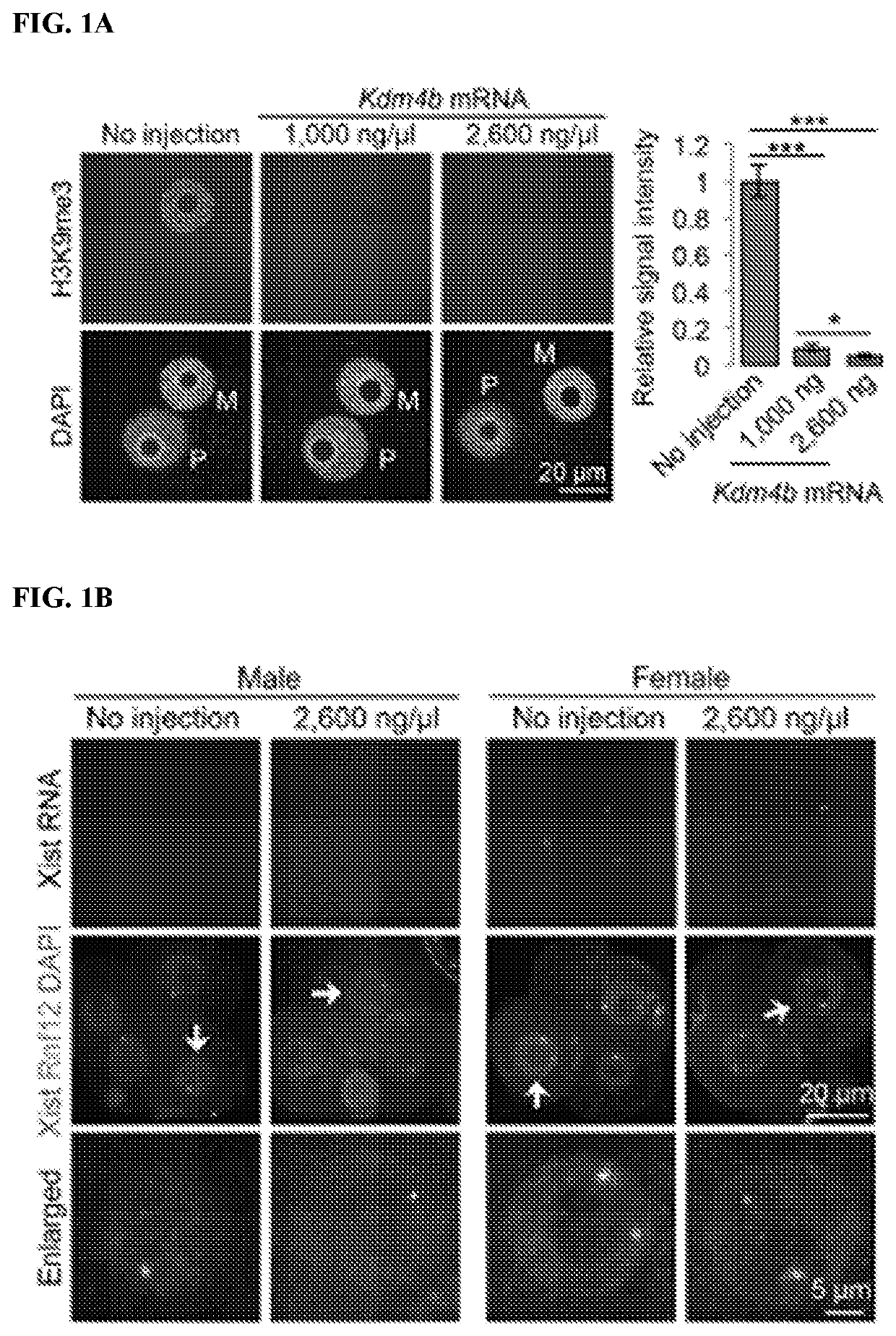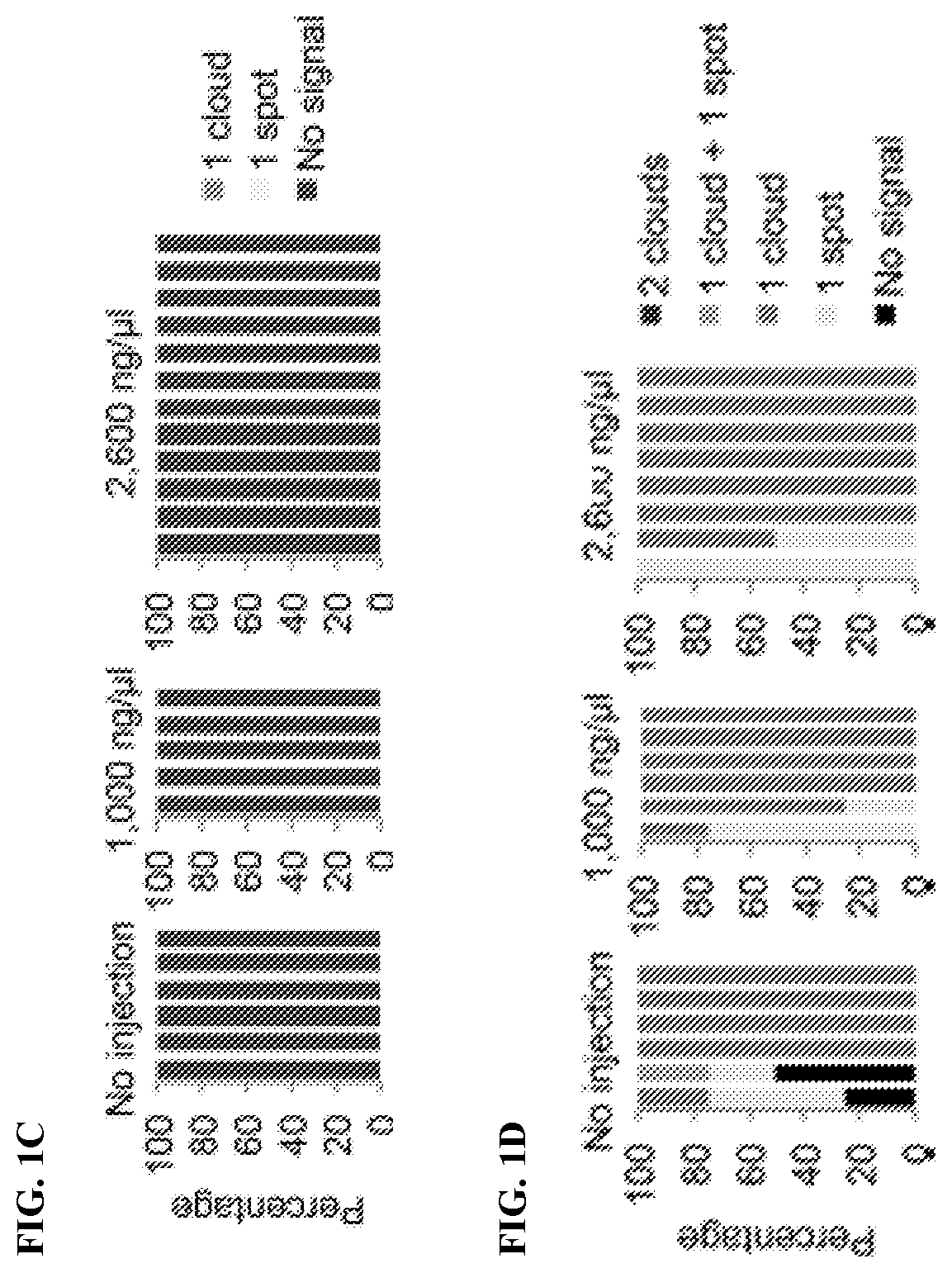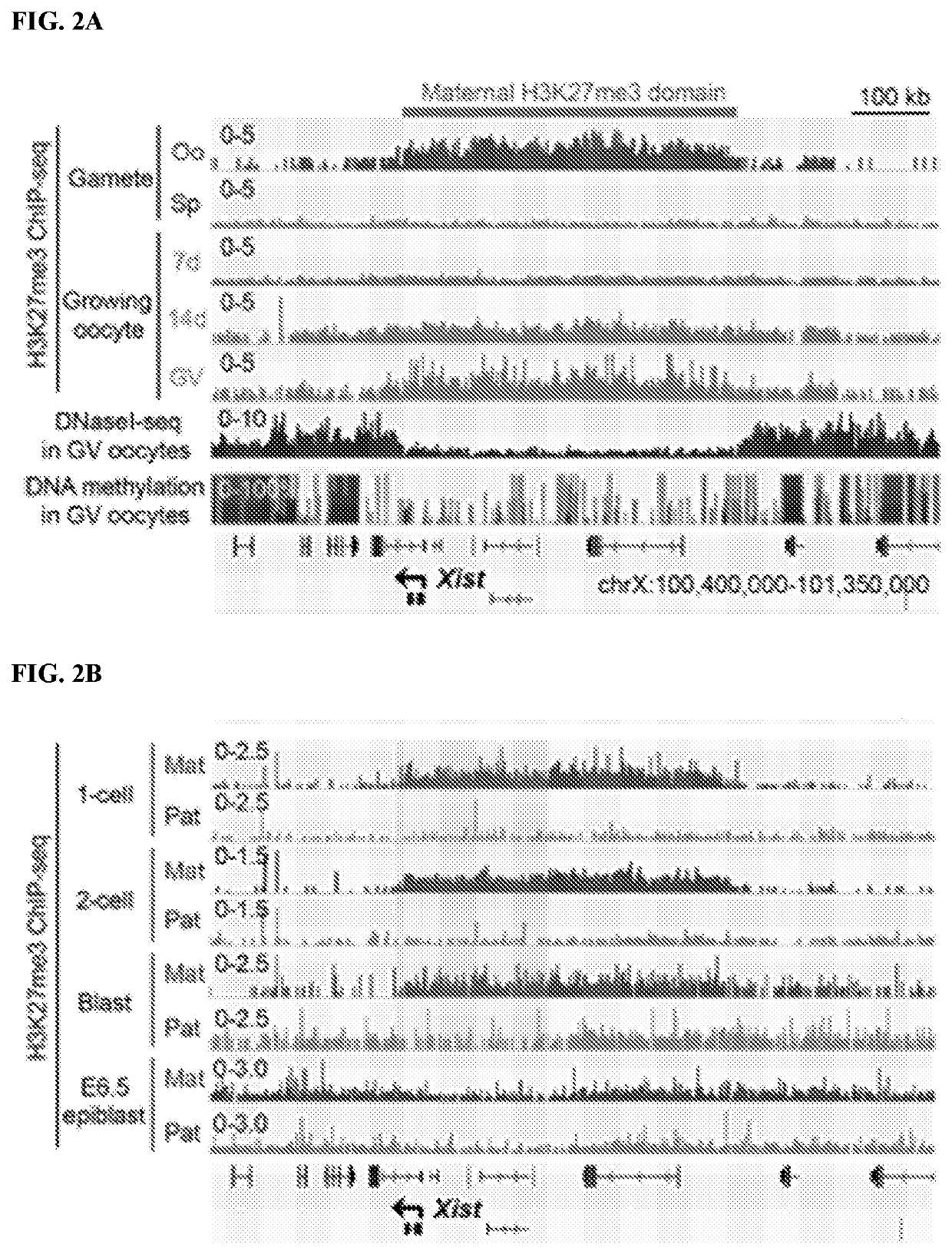Compositions and methods for generating physiological x chromosome inactivation
a technology of x chromosome and inactivation, which is applied in the field of compositions and methods for generating physiological x chromosome inactivation, can solve the problems of low success rate of scnt and defects in imprinting
- Summary
- Abstract
- Description
- Claims
- Application Information
AI Technical Summary
Benefits of technology
Problems solved by technology
Method used
Image
Examples
example 1
s Dispensable for Xist Silencing in Biparental Embryos
[0136]To determine whether Kdm4b-mediated loss of H3K9me3 can induce Xist derepression in biparental embryos, Kdm4b mRNA was injected into in vitro fertilization-derived embryos. Immunostaining analysis confirmed that Kdm4b mRNA injection effectively depleted H3K9me3 in zygotes in a concentration-dependent manner (FIG. 1A). To assess Xist RNA expression, RNA fluorescent in situ hybridization (FISH) analysis was performed in four-cell embryos. To distinguish between male and female embryos, X chromosomes were simultaneously labeled by DNA FISH using a probe specific for the Rnf12 locus. As such, each blastomere of the male or female embryos should have one or two DNA FISH signals, respectively. The “no injection” control male embryos showed no Xist RNA signal, and the majority of female embryos showed one RNA cloud or spot signal (FIGS. 1B-1D). Similarly, Kdm4b-injected embryos did not induce maternal Xist expression in either mal...
example 2
H3K27Me3 Coats Xist in Oocytes and Preimplantation Embryos
[0137]Since maternal H3K27me3 can function as an imprinting mark (Inoue et al. 2017. Nature 547: 419-424), its potential involvement in Xist imprinting was examined. Analysis of H3K27me3 ChIP-seq (chromatin immunoprecipitation [ChIP] combined with high-throughput sequencing) data sets (Zheng et al. 2016. Mol Cell 63: 1066-1079) revealed that Xist is coated with a broad H3K27me3 domain, which spans □450 kb in mature oocytes and is established during oocyte growth (FIG. 2A). Analyses of the oocyte DNase I sequencing (DNase I seq) (Inoue et al. 2017. Nature 547: 419-424) and DNA methylome (Kobayashi et al. 2012. PLoS Genet 8: e1002440) data sets revealed that this entire H3K27me3 domain exhibits low chromatin accessibility and low DNA methylation (FIG. 2A). Without being bound by theory, this suggests formation of a heterochromatin domain independent of DNA methylation. Analyses of the ChIP-seq data sets of post-fertilization em...
example 3
H3K27Me3 is Responsible for Maternal Xist Silencing
[0138]To examine whether H3K27me3 is responsible for maternal Xist silencing, H3K27me3 was depleted in zygotes by injecting mRNA coding an H3K27me3-specific demethylase, Kdm6b (FIG. 3A). As a negative control, zygotes were prepared by injection with the catalytic mutant, Kdm6bMUT, harboring a point mutation at the catalytic domain (FIG. 3A; Inoue et al. 2017. Nature 547: 419-424). Despite the transient expression of the exogenous Kdm6b, the H3K27me3 level in Kdm6bWT embryos was significantly lower than that of Kdm6bMUT embryos at the four-cell and morula stages (FIGS. 5A-5B).
[0139]To confirm that H3K27me3 is lost at the Xist locus in Kdm6bWT-injected embryos, ultralow input native ChIP-seq (ULI-NChIP) analysis was performed (Brind'Amour et al. 2015. Nat Commun 6: 6033), which worked efficiently using 500-2000 mouse embryonic stem cells (FIG. 6A). H3K27me3 ULI-NChIP was performed using □2000 blastomeres from Kdm6bWT- or Kdm6bMUT-inje...
PUM
| Property | Measurement | Unit |
|---|---|---|
| temperatures | aaaaa | aaaaa |
| temperatures | aaaaa | aaaaa |
| temperatures | aaaaa | aaaaa |
Abstract
Description
Claims
Application Information
 Login to View More
Login to View More - R&D
- Intellectual Property
- Life Sciences
- Materials
- Tech Scout
- Unparalleled Data Quality
- Higher Quality Content
- 60% Fewer Hallucinations
Browse by: Latest US Patents, China's latest patents, Technical Efficacy Thesaurus, Application Domain, Technology Topic, Popular Technical Reports.
© 2025 PatSnap. All rights reserved.Legal|Privacy policy|Modern Slavery Act Transparency Statement|Sitemap|About US| Contact US: help@patsnap.com



